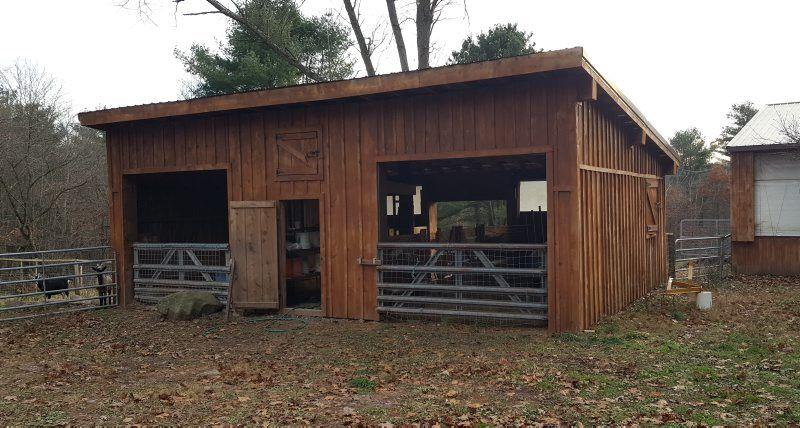Sheep shelters are essential structures that provide a safe and comfortable environment for these animals. However, it’s important to recognize the environmental impact associated with sheep shelters and take proactive measures to minimize their ecological footprint. By understanding the potential environmental consequences, we can make informed choices to mitigate negative impacts and promote sustainability.
In this blog, we will explore the environmental impact of sheep shelters and provide practical steps to address them. From land use and water management to energy consumption and waste disposal, each aspect has the potential to affect the surrounding ecosystem. By adopting responsible practices and implementing appropriate measures, we can ensure that sheep shelters not only meet the needs of the animals but also contribute to the preservation of the environment.
Join us as we delve into the top environmental considerations associated with sheep shelters and discover what actions you can take to reduce their impact. By doing so, we can create a harmonious balance between the well-being of our sheep and the health of our planet.
Land Use and Habitat Conservation
Sheep shelters require land for construction, which can contribute to habitat loss and fragmentation. It’s important to consider the location of sheep shelters and avoid areas with high ecological value. By protecting natural habitats, we can support biodiversity conservation and maintain healthy ecosystems.
Water Management and Runoff
Sheep shelters often have water supply systems and water management is crucial to prevent wastage and runoff. Implementing efficient watering systems and rainwater harvesting techniques can help conserve water resources. Additionally, proper drainage systems should be in place to prevent runoff that may carry pollutants into nearby water sources.
Energy Consumption and Efficiency
Sheep shelters may rely on electricity for lighting, heating, or ventilation. Opting for energy-efficient lighting fixtures and renewable energy sources can help reduce the environmental footprint. Regular maintenance of equipment and insulation improvements can also enhance energy efficiency.
Waste Management and Nutrient Cycling
Effective waste management is vital to minimize the impact of sheep shelters on the environment. Proper handling and disposal of sheep waste, such as manure, can prevent water contamination and reduce greenhouse gas emissions. Employing practices like composting and utilizing manure as organic fertilizer promotes nutrient cycling and reduces reliance on synthetic fertilizers.
Soil Health and Erosion Control
Sheep shelters should be designed and located in a way that minimises soil erosion. Considering the slope, runoff management, and employing erosion control measures like vegetative buffers can help preserve soil health. By preventing soil erosion, we safeguard nutrient-rich soils and maintain a stable ecosystem.
Biodiversity and Wildlife Considerations
Sheep shelters can have implications for local biodiversity and wildlife. Avoiding construction in sensitive areas and maintaining natural vegetation around the shelter can provide habitat and forage options for wildlife. By protecting biodiversity, we contribute to the overall resilience of ecosystems.
Climate Change Mitigation
Sheep shelters indirectly contribute to greenhouse gas emissions through energy consumption and waste management. Implementing energy-efficient practices, utilizing renewable energy sources, and adopting sustainable waste management techniques can help mitigate climate change impacts. Additionally, exploring carbon sequestration opportunities through reforestation or conservation practices supports efforts to combat climate change.
Conclusion:
Sheep shelters are vital for the well-being of these animals, but it’s essential to consider their environmental impact. By addressing land use, water management, energy consumption, waste management, soil health, biodiversity conservation, and climate change mitigation, we can minimize the ecological footprint of sheep shelters. Adopting sustainable practices not only benefits the environment but also ensures the long-term viability of our agricultural systems. Let’s strive for sheep shelters that prioritize animal welfare while minimizing their impact on the environment.
As responsible stewards of the environment, it’s crucial to consider the environmental impact of sheep shelters. By implementing sustainable practices, we can mitigate their ecological footprint and contribute to a healthier planet. From carefully selecting the location of sheep shelters to managing water resources, conserving energy, and properly managing waste, each step we take can make a significant difference.
By prioritizing biodiversity conservation, soil health, and climate change mitigation, we can create sheep shelters that minimize negative environmental impacts. Additionally, employing sustainable construction materials and continuously monitoring and improving our practices will contribute to a more sustainable future.
Remember, every action counts. By taking the necessary steps to reduce the environmental impact of Sheep Shelters, we not only protect the well-being of our sheep but also ensure the preservation of our natural resources for future generations.
Together, let’s strive to create sheep shelters that prioritize the welfare of our animals while treading lightly on the planet. By making informed choices and implementing sustainable practices, we can make a positive difference in the world around us.


